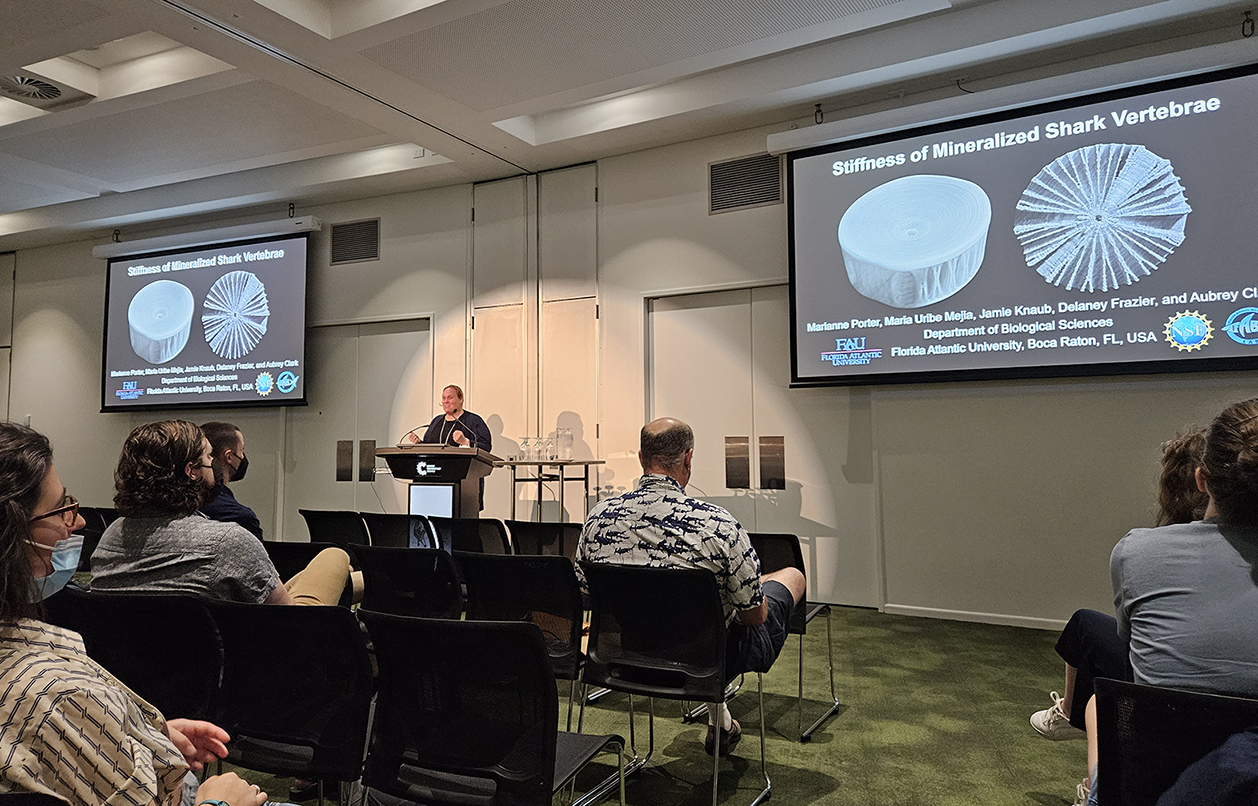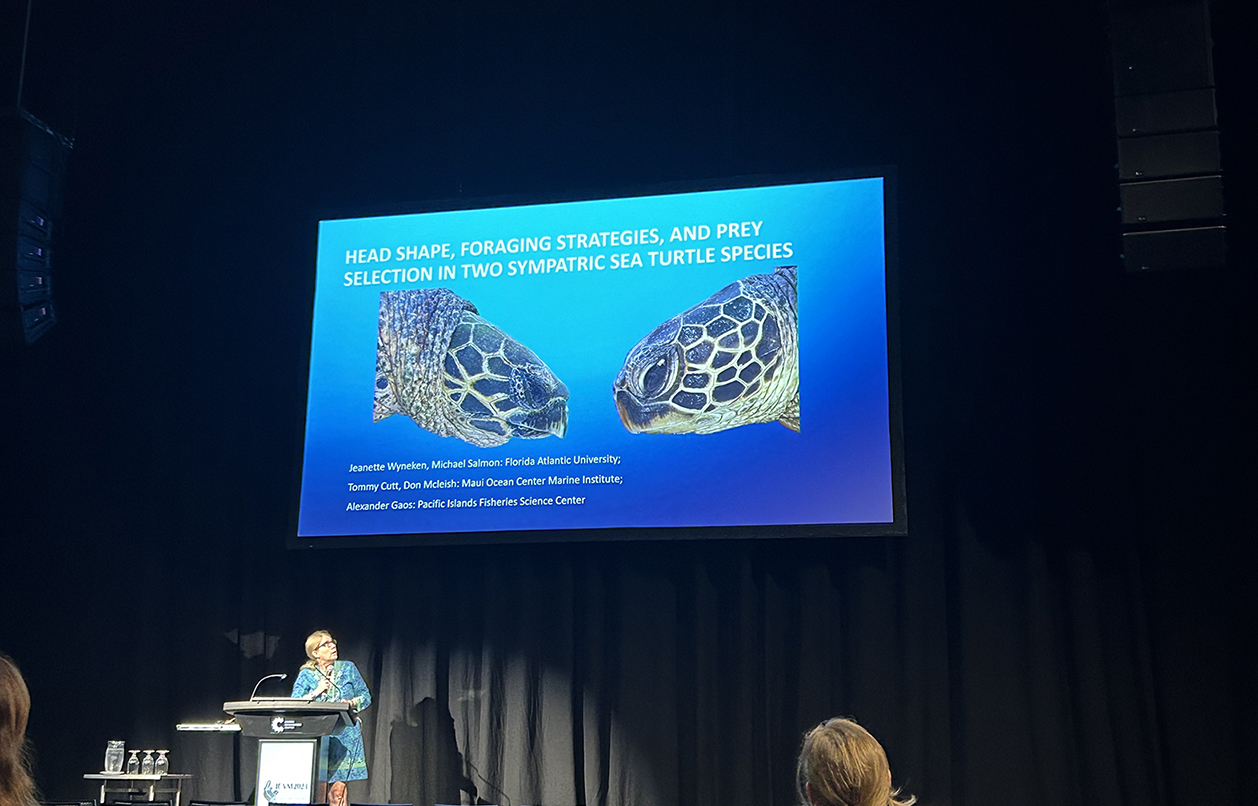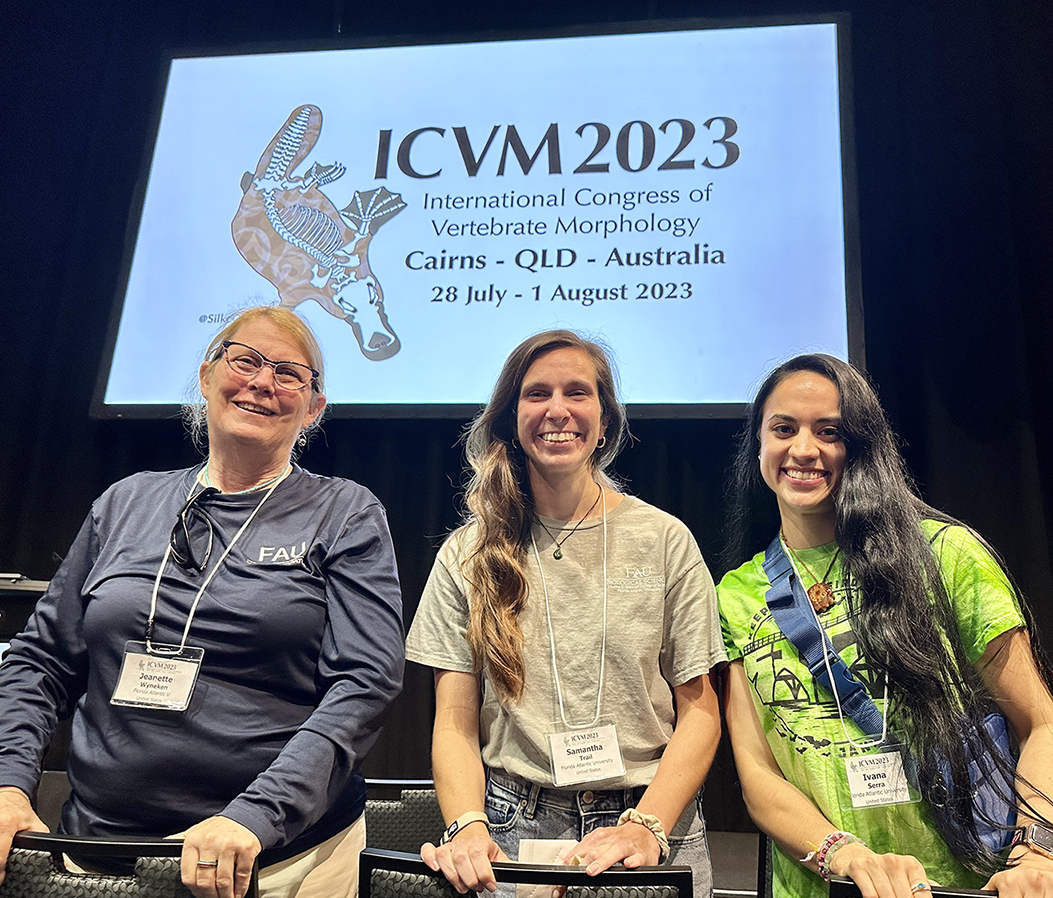
Author: Sam Trail
Date: August 10, 2023
Students and faculty from the FAU Marine Lab attended the International Congress of Vertebrate Morphology (ICVM) in Cairns, Australia! This conference meets once every three to four years and is a chance to present research to our international peers. Seven different oral presentations highlighted the one-of-a-kind research being conducted here at the FAU Marine Lab from both Dr. Marianne Porter’s Florida Atlantic Biomechanics (FAB) Lab and Dr. Jeanette Wyneken’s lab. Check out the description of those presentations below!
From the FAB Lab (the “sharks” pictured at the top):
Madeleine Hagood, a Ph.D. candidate, presented on Mechanical anisotropy of shark skin. Have you ever tried to stretch a piece of fabric and found that it stretches easier in one direction compared to another? Madeleine’s research has found that shark skin behaves in a similar way, stretching more longitudinally, likely making swimming movements efficient and effective.

|

|
Jamie Knaub, a Ph.D. candidate, presented on Regional variation of epiphyseal fusion and trabecular architecture in cetacean vertebrae. Cetaceans are a group of marine mammals that includes whales, dolphins, and porpoises that swim by undulating the posterior portion of their bodies up and down. Their vertebral column, or spine, is made of bony vertebrae (just like us!) and has both compact and spongy (trabecular) bone. Like humans and other mammals, cetaceans have growth plates on either side of their vertebrae that fuse over time. Jamie’s research shows that fusion varies along the spine, and vertebrae with fused plates have a greater amount of spongy bone. Additionally, near the tail where most of that undulation takes place, the pores in the spongy bone are smaller compared to other regions of the spine. Jamie’s presentation was one of two student presentations in a symposium all about the form and function of the trabecular bone!
Dr. Lauren Simonitis, a postdoctoral research fellow, presented on Putting the sharp in sharpnose: the morphology and distribution of denticles inside the olfactory rosette of Atlantic sharpnose sharks. In a session aptly named “Pointy Things,” her research described the presence of dermal denticles (a shark’s tooth-like scales) within the olfactory structures of these sharks. Simonitis hypothesizes that some of these denticles that face the opposite direction of water flow could be present to redirect flow back towards the sensory tissues, maximizing the probability of detecting odors in the water.
Dr. Marianne Porter presented on Regional mechanical properties of mineralized cartilage from shark vertebrae. Her research investigated why the vertebrae (or spine) are stiff yet springy in 13 species of elasmobranch fishes (sharks, rays, and skates). She found some fascinating patterns. She found that toughness (the ability to spring back) of vertebrae varied across different shark species. However, within individuals, stiffness varied regionally along the vertebral column; the middle region was stiffest while anterior and posterior regions were less so. This likely is important for swimming efficiency, as sharks undulate their bodies back and forth to move.
From the Wyneken Lab (the smiles pictured at the bottom):
Ivana Serra, a Ph.D. student, presented on Mechanical behavior of sea turtle shells throughout ontogeny. Her research demonstrates that the ‘protective shields’ of sea turtles are much more flexible than their freshwater and terrestrial counterparts. Additionally, the shells of juveniles appear to be more compliant than adults, and variation also exists between different sea turtle species suggesting that not all shells are created equally.
Samantha Trail, a Ph.D. student, presented on XROMM analysis of flipper movement during locomotion in loggerhead sea turtles. Her research specifically investigated how the front flippers, and the bones that support them, move during the distinctive sea turtle powerstroke This movement is much more elaborate than the up and down ‘flapping’ that was previously described.
Dr. Jeanette Wyneken presented on Head shape, foraging strategies, and prey selection in two sympatric sea turtle species. She compared skull shape and foraging behavior between hawksbill and green sea turtles. Both consume algae growing on the surface of shallow reefs in Hawaii. She found that hawksbills had long, narrow heads and V-shaped jaws, optimal for removing algae lodged in reef crevasses. In contrast, green turtles had blunt, rounded heads with U-shaped jaws, optimal for scraping algae away from flat surfaces.
Our researchers are already itching to get to the next ICVM, which will be a little closer to home in Canada!
